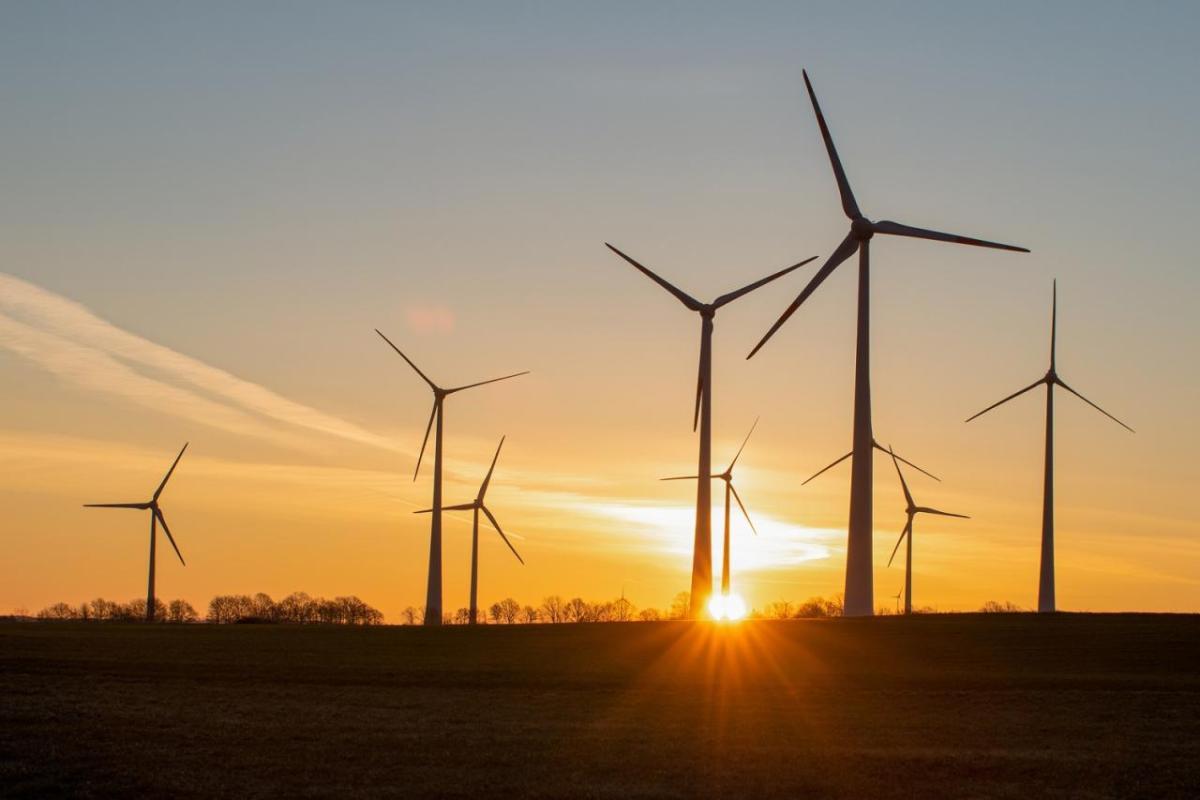Just Energy Transition: The US Perspective

The transition from fossil fuels to renewable energy sources is not just a matter of environmental sustainability, it's also a question of social and economic justice.
Take, for example, what happens when coal mines and coal-fired power plants are shut down?
The displaced workers face the immediate risk of unemployment, often in communities where coal-related jobs are the primary source of income. This creates not only an economic vacuum but also a range of social issues such as increased poverty rates and community disintegration.
In the United States, efforts are underway to facilitate a just energy transition that balances both environmental goals and social equity. Let’s take a brief look at what it means to enact a just transition, then explore what actions the United States is taking.
What Is a Just Energy Transition?
The concept of a just energy transition gained prominence within international governance and policy discussions, particularly through its inclusion in the Paris Agreement. It is now embraced as an ethical imperative and a practical framework by various international bodies, governments, and non-governmental organizations.
The UN Global Compact defines Just Transition as “simultaneously and coherently addressing the three dimensions of sustainable development – environmental, social and economic – with a focus on the role of decent work in generating sustainable and inclusive economic growth and development”.
Building on this global momentum, the United States has also adopted the just energy transition as a cornerstone of its energy policy.
Federal Initiatives for Just Energy Transition in America
Job creation and training programs
The U.S. government has been proactive in investing in workforce development for the clean energy sector. This empowers communities and ensures that American workers are at the forefront of this rapidly advancing field.
Several federal training programs stand out as examples of this investment:
- The Department of Energy's Solar Ready Vets program, which provides career training for military veterans transitioning to civilian roles.
- The Office of Energy Efficiency & Renewable Energy’s Good Jobs and Workforce Development program, aimed at training middle-skill workers to transition to career paths within the clean energy sector.
- Apprenticeship programs supported by the Department of Labor, targeting various sectors within clean energy, from wind turbine maintenance to energy-efficient construction techniques.
These programs offer hands-on experience, often in partnership with industry leaders, to provide workers with the practical knowledge they need to excel in their new roles.
Support for displaced workers
The transition to cleaner energy solutions brings with it the challenge of aiding workers displaced from the fossil fuel industry. The U.S. government has initiated several programs aimed at mitigating the negative impacts.
For example, the POWER Initiative by the Department of Labor is designed specifically to assist communities affected by job losses in coal mining and coal-fired power plants. This program provides funding for workforce development, including retraining and job placement services.
Various forms of assistance are available, ranging from unemployment benefits to career counseling services and targeted skill development courses. These resources are designed to help displaced workers adapt to new roles in a shifting energy market.
Support for affected communities
The Department of Energy's Local Energy Action Program, commonly known as Communities LEAP, aims to accelerate the deployment of energy efficiency and renewable energy technologies in local communities. The program focuses on creating sustainable energy strategies tailored to community-specific needs. Financial resources are allocated for targeted communities, empowering them to build more resilient and efficient energy systems.
International cooperation and partnerships
One noteworthy international effort is the Just Energy Transition Partnership (JETP) between the United States, Indonesia, and South Africa. The partnership aims to accelerate the transition to clean energy in these countries while ensuring social equity and economic sustainability.
Outcomes of these international collaborations include sharing best practices, facilitating technology transfer, and securing financial support for clean energy projects.
State-Level Actions: A Closer Look
Philadelphia: Green projects and racial equity
In Philadelphia, infrastructure funding is being strategically allocated to green projects that prioritize racial equity. The city is placing an emphasis on partnering with historically underutilized businesses to ensure that the benefits of these projects are widely shared.
Chicago: Residential decarbonization program
Chicago is making strides in decarbonization through energy-efficient upgrades in residential buildings. A key component of this initiative is the involvement of local contractors from underrepresented communities, aiming to combine environmental goals with social justice objectives.
New Orleans: Collaborating for environmental justice
New Orleans has entered into a partnership with the Deep South Center for Environmental Justice. The collaboration includes the establishment of technical assistance centers and a focus on climate action equity, aiming to build resilience while ensuring fairness in environmental outcomes.
Colorado: Focused initiatives for coal workers
The Colorado Office of Just Transition has been established to specifically assist coal workers affected by the transition to cleaner energy sources. Coal Transition Community Grants are available to help these communities adapt and develop sustainable economic models.
New Mexico: Energy Transition Act
New Mexico's Energy Transition Act aims to shift from coal to low-carbon energy sources. In addition to setting ambitious clean energy goals, the Act provides for workforce training and transition assistance to ensure that workers are not left behind during this crucial transformation.
The Path Forward for Just Energy Transition
Federal and state-level initiatives have shown a concerted effort to make the energy transition both just and efficient. The significance of a collaborative approach cannot be overstated. Both domestically and internationally, cross-sector partnerships amplify the impact of individual initiatives and are essential for addressing the complex challenges of transitioning to a low-carbon economy while leaving no one behind.
As technology advances and policy evolves, the United States is well-positioned to foster a sustainable and equitable energy future. The key to success will be the continued alignment of economic, environmental, and social objectives, supported by inclusive and far-reaching policies.
Learn more about Energy Transition services from Antea Group, to better understand how your organization can deftly navigate the challenge of our time.

